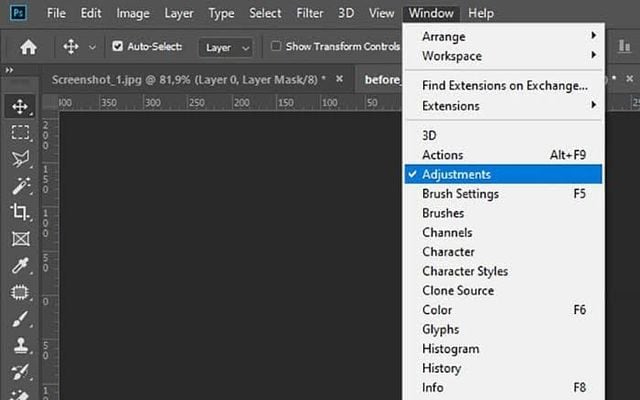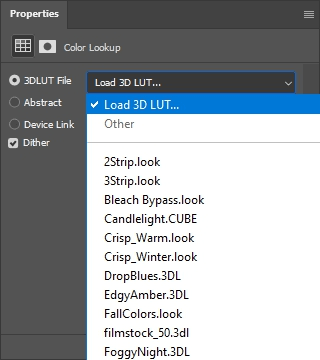![[New] In 2024, Cutting-Edge Photography Techniques Harnessing LUT Capabilities](https://thmb.techidaily.com/98a90a980daafb5d4122c6bec488811f000154f10382aff0b3452de9d0f47411.jpg)
"[New] In 2024, Cutting-Edge Photography Techniques Harnessing LUT Capabilities"

Cutting-Edge Photography Techniques: Harnessing LUT Capabilities
LUTs are popular in the photographic field for all the appropriate purposes. Photographers are now seriously considering the post-processing step of photography, as editing has gained significance. While editing used to be a time-consuming and arduous operation, it has become much easier with the advent of tools like LUTs.
A LUT is a conversion profile that takes your original photograph’s color values, converts them to predefined values, and then adds the new color values. Because the method is similar, some people mix it with color correcting. However, LUTs do the opposite of fixing the colors in your picture. LUTs alter the colors of a photograph to match a specific color scheme.
To put it another way, it’s a color preset for your photo that you can apply with a single click. These speeds up color grading by eliminating the need to modify color wheels and other color selections.
LUTs are classified according to their intended use. Some LUTs make flat-looking Log photos look rich and contrasty. Some LUTs change the look of a picture from one preset to another. Other LUTs convert images between other color spaces.
LUT stands for Lookup Table, and it’s a word you’ll hear a lot in the photographic business. A picture file or a Photoshop plug-in can both be referred to by the abbreviation LUT. Photographers who wish to add specific colors or tones to their shots employ Photoshop plugins, which are generally used in video editing software like Adobe Premiere Pro and Davinci Resolve.
While this may appear to be a complicated idea in the editing process, trust us when we say it isn’t. Color-coded arithmetic equations called LUTs can be used to change the color of your photos or video footage. This program is the most efficient way to alter images without sacrificing quality. LUTs are something you really need for various reasons. Color correcting and replication software are included in your camera. Despite this, you will observe that the output graphics are not up to par when recording in LOG. You might even start to doubt if your capturing methods are incorrect with this shabby-looking imagery wrapped with a satin gloss all around.
However, this is not the case. These photographs and films are exquisite; all they want is some post-processing enhancements, which is where LUTs come in.
It’s not dissimilar to a monitor calibration profile, which corrects the colors displayed on a monitor, or a printer profile, which produces exact colors in a printed photo. However, this discussion process is being utilized to alter tones and colors for an artistic rather than remedial effect, which is a crucial distinction to grasp. LUTs are well-established in the worlds of video editing and cinematography, but their immediate impact and ease of usage also appeal to still photographers.
Lookup Tables help you save a lot of work and time during the editing process. This tool allows you to create a preset look for a particular visual impact. It also accelerates the color grading process. You save a lot of time editing because you may use it immediately for your photographs and movies. LUTs also provide you the artistic opportunity to develop your own personal editing style.
LUTs also aid in the organization of your post-production processes. You must know when to use LUTs, just as you must know when to use other components of the editing process. It assists in getting the work done more effectively after you master the pattern and processes to follow.
How will LUTs change your photography?
Photo editors who are searching for that extra oomph to take their images to the next level adore LUTs. Photographers who wish to save time without losing the excellent quality and aesthetic outcomes that come with hours of minor, manual slider tweaks will benefit significantly from LUTs. You can give your photos a professional look they deserve with just one click. Using the same LUT or a modest selection of LUTs across the board can also help you create consistency throughout a particular photo set or an entire portfolio.
Put another way; a LUT is similar to applying a filter to your image. LUTs are frequently applied via a filter layer in Photoshop, and this is actually the case. A photographer may utilize a LUT for photo enhancement for various reasons.
LUTs assist you in applying a fresh color look to Raw or Jpg photos in seconds. Without adjusting any of your editing program’s sliders, a LUT is set on its own. So you may tweak all of your sliders as much as you want to personalize them. Most programs allow you to adjust the amount of LUT to be used and the overlay settings. Luts enables you to make color adjustments that are difficult or impossible to do in most photo editing software. The tone range of your image can be altered by using a LUT. More appealing skin tones, Faces should not appear tanned—custom color palettes for dramatic portraits, landscapes, and other images.
Warm or cold tones and bold or washed-out styles are all options provided by the LUTs.
Photographers may now utilize the same techniques that film, and television editors have used for years to achieve the excellent new aesthetics seen in blockbusters. With quick LUT looks, you can now apply LUTs to your photographs to make your editing work stand out.
How to use LUTs using Photoshop CC?
LUTs come pre-installed with programs, but you may also purchase them online and add them to your software. You may even buy a look from your favorite film or television show. In Photoshop, LUTs are simple to apply. You can begin in Photoshop with the original photo, which is an image that was captured locally, unprocessed, and straight out of the camera.
- Select the Adjustment Layer icon from the drop-down menu.

Choose Adjustment Layer
- Opt for Color Lookup.
- The Properties inspector will appear. Window>Properties.
- Select Load 3D LUT. A list of LUTs that come with Photoshop will appear.

load 3d lut
- When you select one, you’ll see how the color and tone of the image change.
- The opacity of a LUT can be changed to modify its intensity.
- You can change the Layer Blending mode at any time.
LUTs come pre-installed in Photoshop, and you can use them as adjustment layers. As mentioned earlier, they’ll alter the image’s colors, and some of them will also alter the contrast. But what if you want to add LUTs? To add LUTs to Photoshop, you have two options. The first is really simple; all you have to do is discover the LUT and apply it to that specific project. The alternative is a little more difficult, but it enables you to access your LUTs at all times.
Here’s the first method
- It would be best to unzip the LUT before using it in your project. This is relatively simple, and you may either use specialized software or the built-in unzipping utility in Windows.
- When discussing Photoshop, the project is typically an image, so go ahead and open it. Open a new one by pressing ‘Ctrl+O’ or importing something from your cloud.
- To do so, go to the ‘Adjustments’ tab and select the ‘Color Lookup’ button.
- Select the ‘Load 3D LUT’ button, then navigate to the directory where you unpacked the LUT files.
Here’s the second one
- Open the LUT folder, which changes the version to your version.
- Simply copy your LUTs into the appropriate folder. Make sure Photoshop is closed, and your project is saved before you begin. Otherwise, it may crash, and you will lose all of your work.
- When you’re finished, open Photoshop and use the “Color Lookup” settings to find your LUTs.
Now that you know how to use LUTs in Photoshop, you’ll have a lot of fun creating your own look!
Wondershare Filmora11 Express Better
Achieve More
Grow Together
Free Download Free Download Learn More

Closing Thoughts:
LUTs are extremely useful since they allow photographers to save time by using the same LUTs or a set of LUTs for several photographs. Instead of making individual modifications to your photographs, you may color grade them all with the same LUTs. This gives a series a more unified vibe. You can even put them up as Actions in Photoshop.
The use of LUTs, like most elements of photography and photo editing, necessitates some healthy experimentation. You’ll develop an instinct for accurate color grading and an eye for a good LUT over time, and you’ll be able to tell which photographs would benefit from a certain LUT with ease. We’re sure you’re eager to try out LUTs while editing photographs and movies now that you’ve learned about them. Remember that doing anything new may not appear to be simple. However, with some practice, you’ll improve day by day. The same is true for LUTs! The more you practice with the tool, the better you will become. So, why are you still waiting? Get started now 

Closing Thoughts:
LUTs are extremely useful since they allow photographers to save time by using the same LUTs or a set of LUTs for several photographs. Instead of making individual modifications to your photographs, you may color grade them all with the same LUTs. This gives a series a more unified vibe. You can even put them up as Actions in Photoshop.
The use of LUTs, like most elements of photography and photo editing, necessitates some healthy experimentation. You’ll develop an instinct for accurate color grading and an eye for a good LUT over time, and you’ll be able to tell which photographs would benefit from a certain LUT with ease. We’re sure you’re eager to try out LUTs while editing photographs and movies now that you’ve learned about them. Remember that doing anything new may not appear to be simple. However, with some practice, you’ll improve day by day. The same is true for LUTs! The more you practice with the tool, the better you will become. So, why are you still waiting? Get started now!
Also read:
- [New] Efficiently Start & Schedule a Zoom Call on Any Android Device
- [New] In 2024, Best of the Best Hexacopter Drone Reviews
- [New] In 2024, Captivating Cuts Editor Apps That Liberate Android Users
- [New] Superior Graphics for Top-Tier 4K Editing for 2024
- [New] The Art of Crafting Text Memes Quickly
- [Updated] 2024 Approved Crafting Seamless Image Transfers Across Operating Systems
- [Updated] Cutting-Edge Display Selections #10 Mac List
- [Updated] Pinnacle of Popularity on Reddit - Top 10 Ranking for 2024
- [Updated] Pinnacle Tools for Audio Infused Photography for 2024
- 3 Effective Ways to Unlock iCloud Account Without Password On Apple iPhone 11 Pro Max
- Enduring the Elements: Can EV Batteries Withstand Extreme Heat and Cold?
- Explore Jiraiya's World: Stunning Manga Artwork & Desktop Wallpapers From YL Computing
- In 2024, Mastering Android Device Manager The Ultimate Guide to Unlocking Your Samsung Galaxy F15 5G Device
- In 2024, The Ultimate Blueprint for Mastering PicsArt
- Pioneering Reviews by Tom: Unveiling the Best in Hardware Technology
- Streamline Your Soundtrack with These Playlist Tips for YouTube
- The TP-Link RE200: An Economical Solution for WiFi Range Enhancement and How It Stacks Up
- Title: [New] In 2024, Cutting-Edge Photography Techniques Harnessing LUT Capabilities
- Author: Edward
- Created at : 2025-02-28 16:12:30
- Updated at : 2025-03-02 16:44:02
- Link: https://fox-blue.techidaily.com/new-in-2024-cutting-edge-photography-techniques-harnessing-lut-capabilities/
- License: This work is licensed under CC BY-NC-SA 4.0.